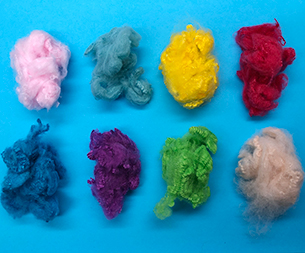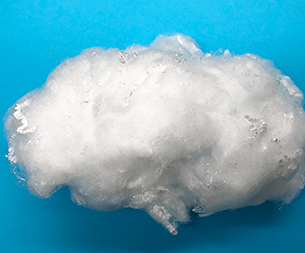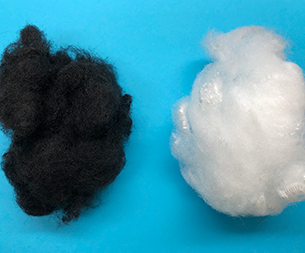(1) The output growth rate increased and the inventory level was normal
In 2023, the growth rate of chemical fiber production has increased compared with 2022. On the one hand, the equipment that the industry originally planned to put into operation in 2022 was partly delayed to 2023 due to market conditions, making the 2023 annual production capacity centralized again. On the other hand, the overall load of the industry is higher than the same period last year, taking direct spinning polyester filament as an example, the first quarter is greatly affected by the Spring Festival factor, the average load of about 67%; The average operating load in the second quarter was about 84%; The average operating load in the third and fourth quarters is about 90%; The annual average operating load increased by about 10 percentage points compared with 2022.
According to the statistics of the China Chemical Fiber Association, the production of chemical fiber in 2023 is 68.72 million tons, an increase of 8.5% (Table 1). Among them, Lycel fiber production of 336,000 tons, a significant increase of 138.3%; Spandex production of 960,000 tons, an increase of 11.6%; The output of polyester was 57.02 million tons, an increase of 8.7% year-on-year.
In the case of high production and high start-up of the industry, the overall inventory of chemical fiber is still at a normal level. Taking polyester POY as an example, the annual average inventory is about 15 days, down 11 days from 2022, especially from June to September, the average inventory is below 15 days.
(2) Domestic demand is gradually picking up, and the pressure on terminal external demand is obvious
The high growth of the supply side is inseparable from the support of the demand side, benefiting from the recovery of the social scene, the domestic market demand resilience of the textile industry in 2023 is strong, and the retail of domestic textile and apparel goods is significantly repaired. Data from the National Bureau of Statistics show that from January to December, the retail sales of clothing, shoes and hats, needles and textile products of units above the quota in the country increased by 12.9% year-on-year, the growth rate rose significantly by 19.4 percentage points compared with 2022, and the overall retail scale exceeded the level in 2019, and was significantly better than the overall level of retail sales of social consumer goods. At the same time, the growth rate of online retail has achieved a good recovery, and the national online retail sales of wear goods in 2023 increased by 10.8% year-on-year, and the growth rate rose significantly by 7.3 percentage points compared with 2022.
Affected by factors such as shrinking overseas demand and rising trade environment risks, the export pressure of China's textile industry in 2023 has significantly increased, but the resilience of the industry development continues to show in the field of foreign trade, and exports to some markets of the "Belt and Road" have achieved better growth, driving the decline in total exports of textiles and clothing gradually narrowed. China Customs Express data show that in 2023, China's textile and apparel exports totaled 293.64 billion US dollars, a year-on-year decrease of 8.1%, and the growth rate fell 10.6 percentage points from 2022, but the cumulative decline has gradually narrowed since September. Among the main export products, the export value of textiles (textile yarns, fabrics and manufactured goods) was 134.5 billion US dollars, down 8.3% year on year; Garment exports were $159.14 billion, down 7.8% year on year. In the main export markets, China's textile and apparel exports to the United States, the European Union, Japan and other markets have decreased compared with the previous year, and exports to Turkey, Russia and other countries along the "Belt and Road" have increased steadily.
Overall, the terminal demand has improved compared with 2022, driving the direct downstream demand for chemical fiber better than the same period in 2022. From the point of view of the opening probability of the main downstream industries of chemical fiber (ammunition, loom, polyester yarn), they are at a high level in recent years. From the perspective of the volume of textile city, it is also slightly better than the same period in 2022, especially after September, the volume increased significantly.
Declaration: The content of this article is organized from the Internet, and the copyright belongs to the original author; If there is infringement, please inform in time and contact to delete.
- Polypropylene staple fiber is wi
- How to better exert the power of
- The characteristics of all aspec
- Internet technology changes cons
- Polypropylene staple fiber proce
- The traditional peak season has
- The performance advantages of Hy
- Operation analysis of China's in
- What factors are Polypropylene s
- From January to August this year
- Markets
- Automotive Products
- Nonwoven Lining
- Geosynthetics
- Liquid Filtration
- Apparel and Textiles
- Hygiene Products
- Building and Construction
- Other Markets
- Contact Us
- Contact Haibang





